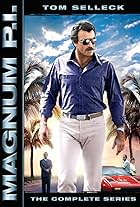Like Der blaue Engel from 1930, Der Untertan is made after a famous novel by Heinrich Mann, the elder and politically more interested of the two German writer brothers. Here as there, the film is about the criticism for a social characteristic which is regarded as typical for the German background: the Philistine who is fixated on authority and blindly tumbles into war and downfall.
The film tells in episodes about the life story of Diederich Heßling (Werner Peters), youth and university days of the son of a factory owner and his gradual rise into better circles of the Prussian small town Netzig in the 80s of the 19th century; Germany is already an empire with Wilhelm II. being in power. During his studies and his time in the military service, Heßling learns how to be subject to superiors, to endure humiliation, to denounce and to enjoy the power over inferiors to the full. He takes over the father's factory, joins the conservative-nationalist party and a war club and marries a rich heiress. The height of his career is the opening of a warrior monument in Netzig; he appears as the official speaker and baths in the patriotic phrases of national authorities when a thunderstorm interrupts the ceremony and clears the whole place.
The alarming final shot of the monumental emperor, Wilhelm II., is a direct reference to the nation's dark future, WWI and WWII which both - from the perspective of the film - arose from the Prussian way of ruling and the servile attitude of the subjects, the German people. The incidental music to this last take is a repulsive potpourri of "Die Wacht am Rhein", an anti-French national song, the "Horst-Wessel-Song", a martyr anthem of the Nazis and the fanfares which introduced "Die Wochenschau", a weekly propagandistic newsreel that was shown in the cinemas of the Third Reich.
Without reservation, this film can be accepted as a work of art about a weighty epoch in German history, the Wilhelminian era. The characters precisely personify the important and guiding institutions like school, university, military and government. The film succeeds in picturing the fatal relation between philistinism and war enthusiasm, whereas the camera excellently describes the subject's point of view and position: Heßling looks bottom-up to the authority. Next to the acting brilliance of Werner Peters, it's those camera looks which outfits the film with an outstandingly analytical and aesthetic quality.



























